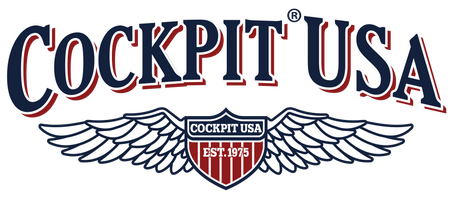
The Continental US Navy was founded in Philadelphia on October 13th, 1775 when the Second Continental Congress passed a resolution creating one of the cornerstones for the expansion of the United States into a global power. But it is the town of Whitehall in New York State, a town founded by a British Army Captain in 1759, that claims the honor of creating the first fighting ships known as the Valcour fleet. These ships sailed on Lake Champlain under the direction of General Arnold against the British Navy. Although they did not win the fight in 1776, the fleet stopped the British Naval efforts to invade the northern colonies via Lake Champlain, a major trading route southward from British controlled Canada.


Generally recognized as one of the first heroes of our Continental Navy was a Scotsman named John Paul, who cleverly later added the “Jones” to his name in order to avoid un-pleasantries in England due to bad behavior. Nevertheless, John Paul Jones became a notable naval hero of the American Revolution wreaking havoc on the British Royal Navy with his small fleet of ships operating in European waters ultimately contributing to the American victory.

Fast forward to our present-day Navy, whose backbone of might is based on aircraft carriers, airpower, nuclear submarines, and a relatively small fleet of surface warfare ships equipped with enough sophisticated power to “encourage” entire unfriendly nations into diplomatic agreements. The aircraft carrier became preeminent in WWII from 1942 to 1945 and the Navy combat pilots, deck crews and seaman became our heroes for generations.

The Navy pilots flew with leather flight jackets since the late 1920s as well as
Bedford cord cotton flight jackets. The
G-1 iconic flight jacket, originally called the M-422, was part of the pilot’s uniform since the mid- 1930s. Their leather jackets were decorated with squadron emblems and hand painted images, classically portrayed in many movies including the iconic1986 feature film
“Top Gun” which became a worldwide symbol of carrier-based air power: Navy Jets, sailors, and pilots who flew in harm’s way recalling another era of the adventurous events of the sailing ships in combat during the American Revolution.
 Thom Richard wearing his Cockpit USA U.S. Navy Issue Mil Spec G-1 Jacket
Thom Richard wearing his Cockpit USA U.S. Navy Issue Mil Spec G-1 Jacket
 Classic Naval Aviator's "100 Mission" Flight Jacket
Classic Naval Aviator's "100 Mission" Flight Jacket
 N1 Bedford Cord Navy JackeT
N1 Bedford Cord Navy JackeT
The symbol of the legendary quality of iron men and wooden ships translated into the nuclear-powered aircraft carriers of today along with the nostalgic and historic
US Navy Pilot’s leather flight jacket has transcended
USN history into an important and sought-after element of American culture. With guns, missiles, and lasers from high seas to high skies, the US Navy has a heck of a 243-year legacy.
 The Continental US Navy was founded in Philadelphia on October 13th, 1775 when the Second Continental Congress passed a resolution creating one of the cornerstones for the expansion of the United States into a global power. But it is the town of Whitehall in New York State, a town founded by a British Army Captain in 1759, that claims the honor of creating the first fighting ships known as the Valcour fleet. These ships sailed on Lake Champlain under the direction of General Arnold against the British Navy. Although they did not win the fight in 1776, the fleet stopped the British Naval efforts to invade the northern colonies via Lake Champlain, a major trading route southward from British controlled Canada.
The Continental US Navy was founded in Philadelphia on October 13th, 1775 when the Second Continental Congress passed a resolution creating one of the cornerstones for the expansion of the United States into a global power. But it is the town of Whitehall in New York State, a town founded by a British Army Captain in 1759, that claims the honor of creating the first fighting ships known as the Valcour fleet. These ships sailed on Lake Champlain under the direction of General Arnold against the British Navy. Although they did not win the fight in 1776, the fleet stopped the British Naval efforts to invade the northern colonies via Lake Champlain, a major trading route southward from British controlled Canada.

 Generally recognized as one of the first heroes of our Continental Navy was a Scotsman named John Paul, who cleverly later added the “Jones” to his name in order to avoid un-pleasantries in England due to bad behavior. Nevertheless, John Paul Jones became a notable naval hero of the American Revolution wreaking havoc on the British Royal Navy with his small fleet of ships operating in European waters ultimately contributing to the American victory.
Generally recognized as one of the first heroes of our Continental Navy was a Scotsman named John Paul, who cleverly later added the “Jones” to his name in order to avoid un-pleasantries in England due to bad behavior. Nevertheless, John Paul Jones became a notable naval hero of the American Revolution wreaking havoc on the British Royal Navy with his small fleet of ships operating in European waters ultimately contributing to the American victory.
 Fast forward to our present-day Navy, whose backbone of might is based on aircraft carriers, airpower, nuclear submarines, and a relatively small fleet of surface warfare ships equipped with enough sophisticated power to “encourage” entire unfriendly nations into diplomatic agreements. The aircraft carrier became preeminent in WWII from 1942 to 1945 and the Navy combat pilots, deck crews and seaman became our heroes for generations.
Fast forward to our present-day Navy, whose backbone of might is based on aircraft carriers, airpower, nuclear submarines, and a relatively small fleet of surface warfare ships equipped with enough sophisticated power to “encourage” entire unfriendly nations into diplomatic agreements. The aircraft carrier became preeminent in WWII from 1942 to 1945 and the Navy combat pilots, deck crews and seaman became our heroes for generations.
 The Navy pilots flew with leather flight jackets since the late 1920s as well as Bedford cord cotton flight jackets. The G-1 iconic flight jacket, originally called the M-422, was part of the pilot’s uniform since the mid- 1930s. Their leather jackets were decorated with squadron emblems and hand painted images, classically portrayed in many movies including the iconic1986 feature film “Top Gun” which became a worldwide symbol of carrier-based air power: Navy Jets, sailors, and pilots who flew in harm’s way recalling another era of the adventurous events of the sailing ships in combat during the American Revolution.
The Navy pilots flew with leather flight jackets since the late 1920s as well as Bedford cord cotton flight jackets. The G-1 iconic flight jacket, originally called the M-422, was part of the pilot’s uniform since the mid- 1930s. Their leather jackets were decorated with squadron emblems and hand painted images, classically portrayed in many movies including the iconic1986 feature film “Top Gun” which became a worldwide symbol of carrier-based air power: Navy Jets, sailors, and pilots who flew in harm’s way recalling another era of the adventurous events of the sailing ships in combat during the American Revolution.
 Thom Richard wearing his Cockpit USA U.S. Navy Issue Mil Spec G-1 Jacket
Thom Richard wearing his Cockpit USA U.S. Navy Issue Mil Spec G-1 Jacket
 Classic Naval Aviator's "100 Mission" Flight Jacket
Classic Naval Aviator's "100 Mission" Flight Jacket
 N1 Bedford Cord Navy JackeT
The symbol of the legendary quality of iron men and wooden ships translated into the nuclear-powered aircraft carriers of today along with the nostalgic and historic US Navy Pilot’s leather flight jacket has transcended USN history into an important and sought-after element of American culture. With guns, missiles, and lasers from high seas to high skies, the US Navy has a heck of a 243-year legacy.
N1 Bedford Cord Navy JackeT
The symbol of the legendary quality of iron men and wooden ships translated into the nuclear-powered aircraft carriers of today along with the nostalgic and historic US Navy Pilot’s leather flight jacket has transcended USN history into an important and sought-after element of American culture. With guns, missiles, and lasers from high seas to high skies, the US Navy has a heck of a 243-year legacy.





